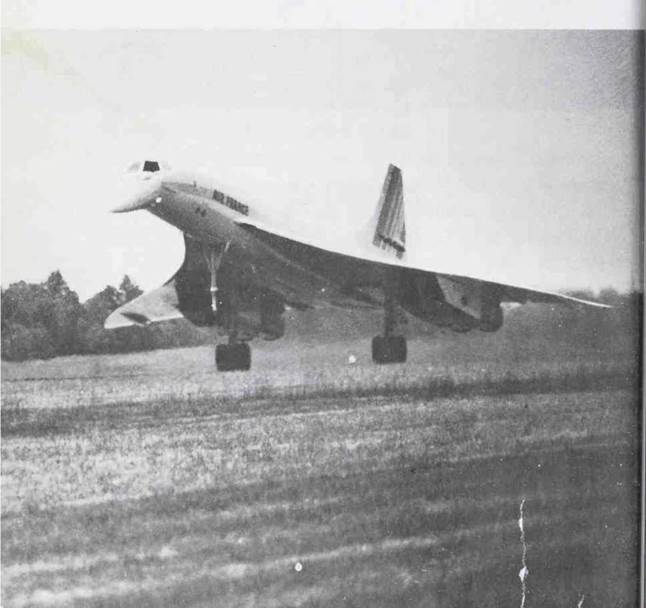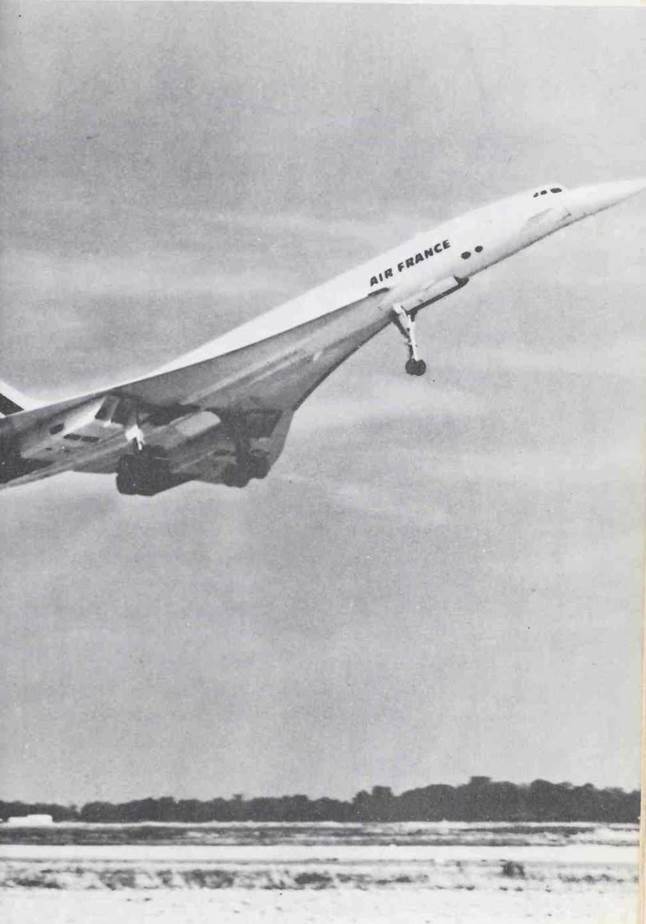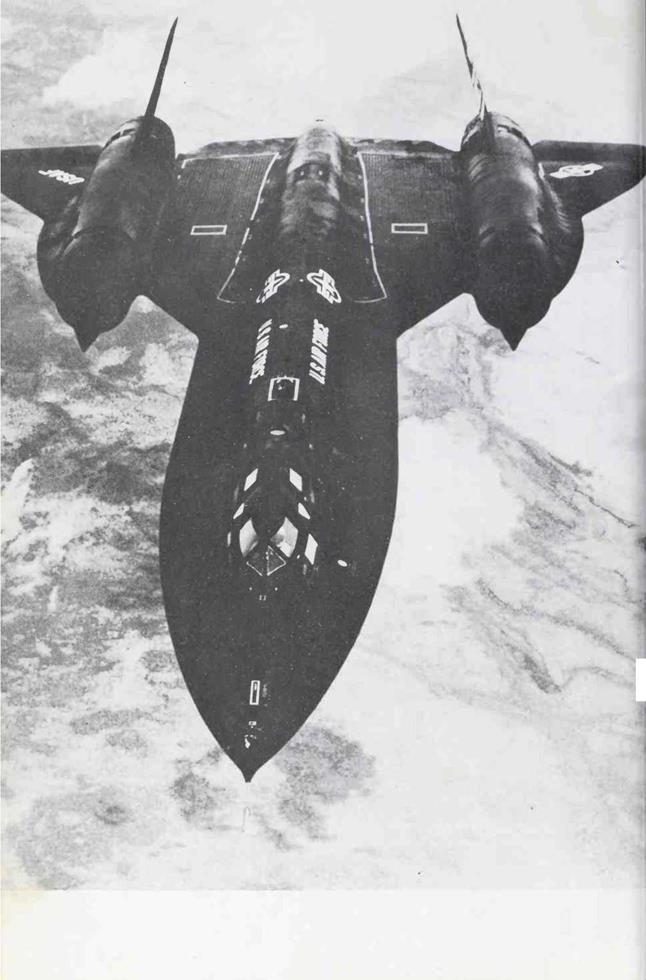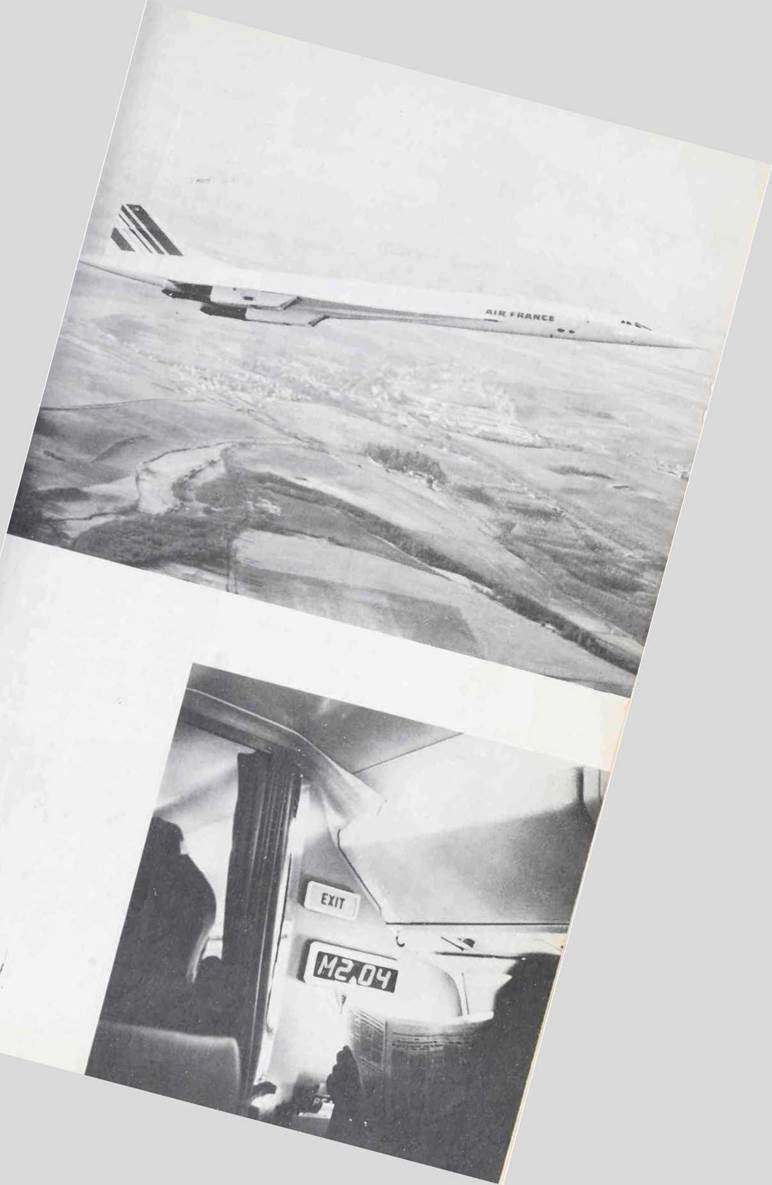SUPERSONIC TRANSPORTS
Sound travels at about 760 miles an hour through the atmosphere. Aircraft that move faster than sound are said to be supersonic. Today supersonic transports—called SSTs— streak through the sky at more than twice the speed of sound.
The term Mach number is used to report the speed of an airplane. A Mach number is a measure of an aircraft’s speed in relationship to the speed of sound. The speed of sound is given a Mach number of one.
An aircraft moving at twice the speed of sound is said to be flying at Mach 2. A Machmeter is shown in the lower photo on the opposite page. The Machmeter is in the passenger cabin of a Concorde—the first SST. The meter indicates that the plane is flying at Mach 2.04, which is more than twice the speed of sound.
The Concorde is shown in the upper photo. It can carry 108 passengers with a total payload of 25,000 pounds. Concorde burns somewhat less fuel to fly across the Atlantic Ocean than a 747, and it can fly over a range of 4,000 miles. The plane is designed to cruise at Mach 2. The altitude at which the Concorde normally flies is between
50,0 and 60,000 feet.
|
|
The nose of the Concorde is lowered to improve the pilot’s visibility at takeoff and landing. The Concorde’s nose droop can be seen clearly in the photo below taken during a landing at Washington’s Dulles Airport. Dulles Airport is sometimes referred to as “The Airport of the Future." It was designed to handle aircraft like the Concorde.
The wings of the Concorde have a very special shape. They are shaped like the Greek letter delta, which looks like a triangle. For this reason the Concorde is called a delta-wing SST.

A delta-shaped wing gives an SST some advantages. The large surface area of the wing produces a cushion of air
 |
below it. The cushion of air makes it impossible to stall the plane while landing. And it allows the pilot to land the plane safely at relatively low speeds. The landing speed of the Concorde is about 180 miles per hour.
An SST can move faster than the speed of sound. When one does, it outraces its own sound and produces a boom. A sonic boom is simply a strong pressure wave. It is produced by two cones. One cone forms at the nose and the other forms at the tail of the SST. A boom carpet, shown in the picture above, spreads across the earth when the cones reach the ground. The width of Concorde’s “boom carpet” is about 50 miles.
A sonic boom is not produced until an aircraft is flying faster than Mach 1, the speed of sound. Thus, at subsonic speeds Concorde is just like any other airliner and it makes no boom. This fact is used to control the boom produced by the Concorde.
On takeoff, the Concorde becomes airborne at a speed around 200 miles per hour. The takeoff speed, of course, depends on the aircraft’s weight and how heavily it is
loaded. Thus the Concorde takes off and lands in a normal manner at low speeds that produce no boom.
The acceleration to supersonic speeds is delayed after takeoff until the plane is safely over the ocean and away from inland and coastal cities. When Concorde approaches a coastal area such as New York, for example, it decelerates to subsonic speeds. In fact, Concorde begins flying at low speeds over the ocean at least 100 miles from land. The subsonic speeds produce no booms.
At supersonic speeds a plane’s skin gets hot. The heat is generated by the passage of air over the outer surface of the aircraft. A supersonic transport needs an air-conditioning system to maintain a comfortable temperature in the passenger cabin.
The Concorde has a specially designed air-conditioning system that maintains a uniform cabin temperature. During the landing descent at subsonic speeds, Concorde’s skin cools down. The outer surface is not warm to the touch after the plane lands.
Supersonic transports can reduce the travel time between all major cities in the world. The Concorde travel time between New York and London is three and one-half hours. At present subsonic speeds, New York is seven hours from London. The trip from Los Angeles to Honolulu by subsonic jet takes just over five hours. The Concorde cuts this travel time in half. A trip from San Francisco to Melbourne, Australia, takes almost nineteen hours by subsonic jet. The Concorde puts San Francisco within nine and one-half hours of Melbourne.

|
|
|
|
|












